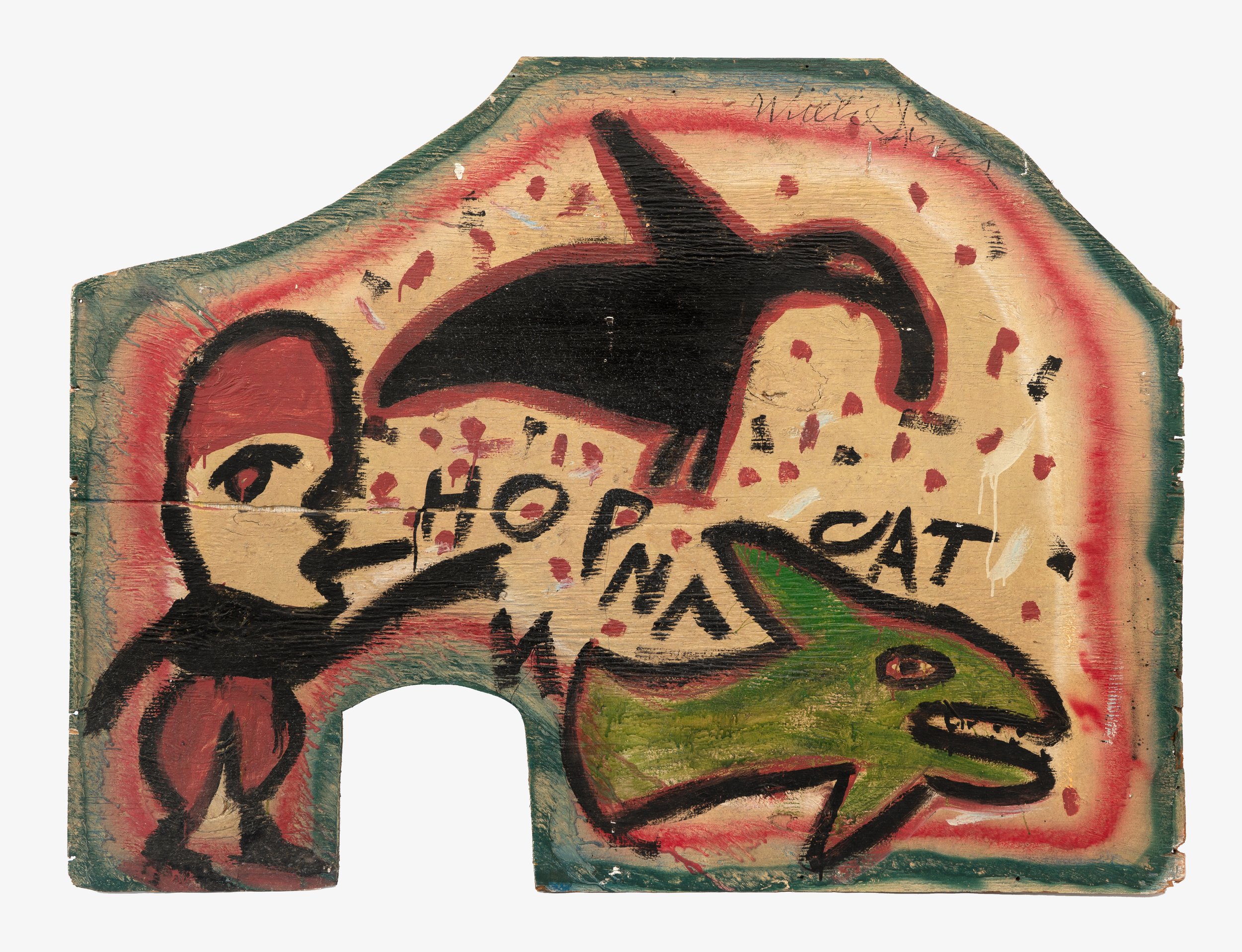Castaways
June 24 - July 24, 2021
A collaboration between SHRINE and Shelter Gallery
179 E Broadway, New York, NY 10002
Good art paper turns me off… something out of a trash pile, that turns me on.
– Sybil Gibson
Castaways highlights two American self-taught artists, Sybil Gibson and Willie Jinks, who have quite literally been cast away from the mainstream and Outsider art worlds. This is striking on many levels, but most notably because Gibson and Jinks each created highly-singular and evocative bodies of work that evolved over the course of many decades yet remained stylistically consistent. As artists, both obsessively documented the world around them and devised expressive artistic voices to share their histories, thoughts and affinities. Their oeuvres bear witness to complex lives lived and deserve a more thoughtful examination and presentation than back lots in small folk art auctions and discount listings on eBay.
Despite having no formal art education, Sybil Gibson (1908–1995) was decisively an artist. She wrote and spoke extensively about her practice and was always guided by her intuition– “When I paint I do not see anything except that which is coming into being under my brush. I am creating. I am molding. I am shaping. I am growing… I am allowing the unknown to focus right there under my brush.” This process is self-evident in her paintings, which were forcefully executed yet remain delicate and almost ghostly in appearance.
Sybil Gibson’s early years were comfortable, both physically and financially, as she was born into an affluent family in Dora, Alabama. While in college, where she studied biology and education, she married Hugh Gibson. The couple eventually had a daughter; however, soon after the birth, and in connection with a fraught relationship with her husband, Gibson suffered an emotional breakdown and unexpectedly fled Alabama – and her family to relocate to Florida. It was here that Sybil Gibson began painting on soaked and flattened brown paper bags around 1963. Her ethereal style and unique process attracted attention almost immediately, garnering her a solo exhibition at the Miami Museum of Modern Art in 1965. Gibson was scheduled to have a second solo exhibition at the same museum in 1971, yet she once again vanished right before the opening leaving her artwork strewn about her yard. Eventually, with the help of a private investigator, Sybil Gibson’s daughter was able to locate and reconnect with her mother before Gibson’s passing in 1995.
Willie Jinks (1921–2012) was born into a large sharecropper family in rural Locust Grove, GA, where he grew up sharing a home with three brothers, six sisters and numerous cousins, all of whom later make appearances in his paintings. As a boy, Jinks was only able to attend school through the fifth grade before being asked to help his family in the fields, which most likely accounts for the cryptic and often unintelligible writing in many of his works. When he was old enough, Jinks decided to leave home and abandon a life spent plowing cotton and tending cornfields to move to Atlanta, where he began working for the Department of Sanitation collecting trash and cleaning sidewalks. It was after retiring from this job in his early 70s that Jinks found himself as an artist.
Following his retirement, Willie Jinks began driving an old van around town each day scavenging for scrap-plywood, old doors, bicycle wheels, toys and anything else that might catch his eye for use in his “Hobby Shop”. The Hobby Shop started as a small backyard shed but quickly evolved into a large-scale outdoor art environment filled with complicated whirligigs, go-karts, kinetic airplane assemblages and hundreds of paintings often stacked ten-deep along his fence. “I just have all these things in my head that I have to get out”, he once told a visitor admiring his sprawling yard show.
Jinks often painted reenactments of humorous stories he'd heard growing up, many of which were quite explicit, and also documented his memories of life growing up in rural Georgia, animals he’s seen, fantastical creatures and architecture (both real and imagined). These scenes were recreated on found materials including doors, sheet metal, wood, windows, paper and chipboard, and they were sold to anyone passing by who had interest in his work and a few dollars to spare. Willie Jinks is most known for his “Hoperman” character, which roughly translates to “Hobby Man”, and who is believed to be a slightly mischievous alter-ego that routinely shows up in his paintings drinking, dancing and chasing women, all things he was too busy making art to actually do.

